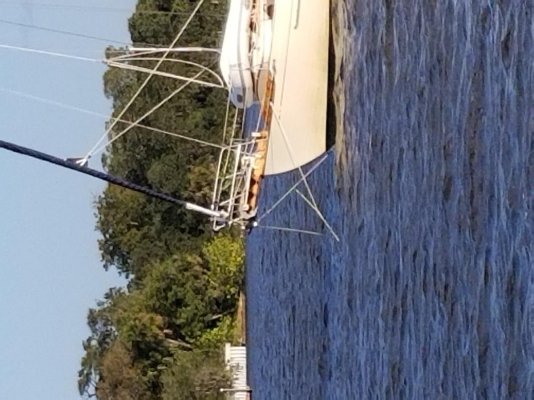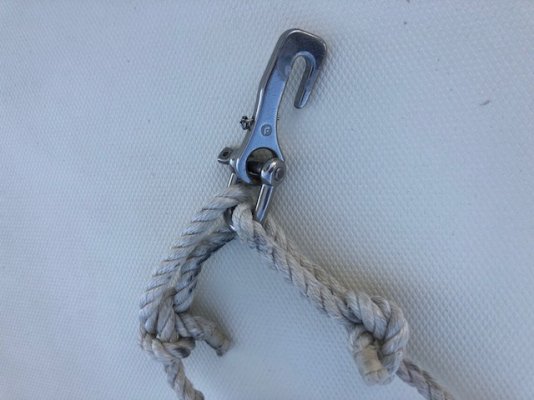O C Diver
Guru
- Joined
- Dec 16, 2010
- Messages
- 12,868
- Location
- USA
- Vessel Name
- Slow Hand
- Vessel Make
- Cherubini Independence 45
So after last weekend's Southeast coast storm, I need to make a new snubber or 2. Lots of time to think when you're hunkered down on the hook and your single 3/4" rope snubber looks to be less than 1/2" wide. Switched out to the double during a lull in the wind. So I pretty much know what I'm going to make, until I saw this.

Crap! Picture is 90 off and they just lengthened the lines so that the splice is now underwater.
My double line that goes through the hawse pipes to the cleats, is two lines to the hook / plate. The one in the picture is braided forward of the bow with one line going to the chain.
Anyone used one like this or care to offer opinions?
Ted

Crap! Picture is 90 off and they just lengthened the lines so that the splice is now underwater.
My double line that goes through the hawse pipes to the cleats, is two lines to the hook / plate. The one in the picture is braided forward of the bow with one line going to the chain.
Anyone used one like this or care to offer opinions?
Ted

